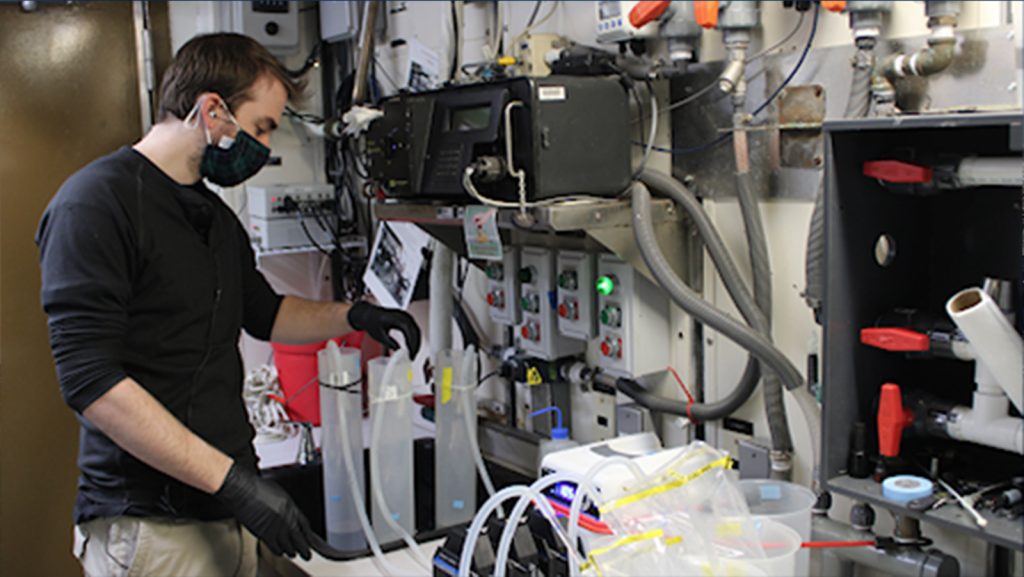
Research Highlights
Research Interests
Marine microbial ecology and physiology.
Environmental DNA to target microbes to bony fishes.
Establishing time series sampling (space and time).
Linking biology to environmental variables.
Methods development for eDNA research.
Sean Anderson, Ph.D.
NGI Postdoctoral Researcher, Ocean Chemistry and Ecosystems Division
305.361.4419
4301 Rickenbacker Causeway
Miami, Florida 33149
“I knew I wanted to become a scientist after my first look at seawater underneath a microscope. I could not believe the world of plankton and microbial life that was previously hidden to the naked eye.”
Life in the ocean is diverse and dynamic. Dr. Anderson’s research is aimed at better understanding the ecology of marine life, from the smallest single-celled microbes to DNA molecules that are shed from larger animals like fish. More specifically, his research is focused on advancing ‘omics research at NOAA, with an emphasis on methods development for marine environmental DNA (eDNA) extraction, sample processing, and bioinformatics pipelines. These methods are being applied to the collection of eDNA off coastal Florida (Biscayne Bay) and on cruises in the Gulf of Mexico, allowing us to measure biodiversity over space and time and gain insight into the response of marine life to a changing environment.
NGI Postdoctoral Researcher, Ocean Chemistry and Ecosystems Division
2013, B.S. Biological Sciences (Magna Cum Laude), Old Dominion University, Norfolk, Virginia
2016, M.S. Oceanography, RSMAS, University of Rhode Island, South Kingstown, Rhode Island
2020, Ph.D. Marine Science, RSMAS, University of Georgia, Skidaway Institute of Oceanography
- Anderson, S.R., and E.L. Harvey. Estuarine microbial networks and relationships vary between environmentally distinct communities. PeerJ, 10:e14005, https://doi.org/10.7717/peerj.14005 2022
Ref. 4154 - Anderson, S.R., and L.R. Thompson. Optimizing an enclosed bead beating extraction method for microbial and fish environmental DNA. Environmental DNA, 4(2):291-303, https://doi.org/10.1002/edn3.251 2022
Ref. 4014 - Thompson, L.R., S.R. Anderson, P.A. Den Uyl, N.V. Patin, G. Sanderson, and K.D. Goodwin. Tourmaline: A containerized workflow for rapid and iterable amplicon sequence analysis using QIIME 2 and Snakemake. GigaScience, 11(1):giac066, https://doi.org/10.1093/gigascience/giac066 2022
Ref. 4130